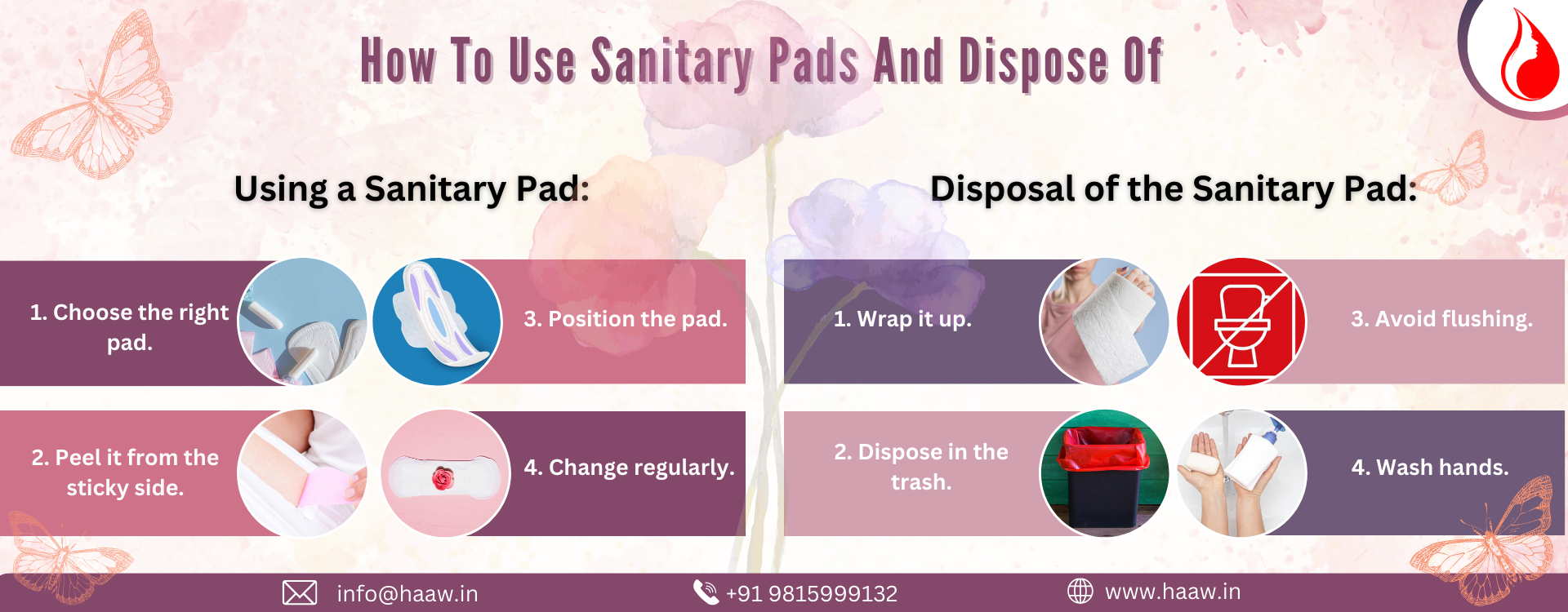
Millions of people worldwide undergo the natural process of menstruation. For people’s health and well-being, managing menstrual hygiene properly is crucial. One of the most popular period hygiene products is sanitary pads sometimes referred to as menstruation pads or sanitary napkins. We’ll go into the proper uses and responsible disposal of sanitary pads in this article.
Understanding Sanitary Pads: During menstruation, sanitary pads are made of absorbent materials that are worn externally to absorb menstrual flow. To suit a range of tastes and flow intensities, they are available in a variety of sizes, shapes, and absorbencies. A sanitary pad usually has three parts: an absorbent core, a soft outer layer, and a strip of glue to attach it to undergarments.
How to Use Sanitary Pads: Correct use of sanitary pads is necessary for both comfort and efficacy. Here’s a step-by-step guide:
- Take the Pad Off: Carefully, take the sanitary pad out of its container.
- Set the Pad in Place: Make sure the absorbent side of the pad is facing your body, remove the strip of glue, and position the pad in the middle of your undergarments.
- Tighten the Pad: The pad will stay in place if you press down on the sticky strip.
- Change Regularly: Replace your sanitary pad every four to six hours, or more often if it starts to get wet.
Disposal of Sanitary Pads: It’s essential to dispose of used sanitary pads properly to preserve hygiene and stop polluting the environment. Here are the steps on how to dispose properly:
- Wrap the Pad: After taking out the used pad, carefully wrap it in the extra tissue paper or the wrapper.
- Seal the Wrapper: To stop any leaks or odors, seal the wrapped pad.
- Place in Trash Can: Place the sealed pad in a designated waste bin, preferably one with a lid, to contain odors and prevent pets or pests from accessing it.
- Avoid Flushing: Sanitary pads can clog pipes and cause sewage blockages, so never flush them down the toilet.
Safe Disposal Methods: For the sake of environmental preservation and hygiene, sanitary pad disposal must be done correctly. Here are the guidelines for safe disposal:
- Wrap and Seal: Always wrap used pads securely in the wrapper or additional tissue paper before disposal to contain any menstrual fluid and prevent leakage.
- Use Waste Bins: To dispose of the wrapped pads, use specially marked waste bins, like the ones in bathrooms or restrooms. If disposed of at home, consider using a separate bin with a lid to contain odors.
- Avoid Flushing: Sanitary pads should never be flushed down the toilet as they can clog sewage systems and damage the ecosystem. Flushing pads can also contribute to the pollution of water bodies.
Eco-Friendly Alternatives: In recent years, there has been a growing interest in eco-friendly menstrual products as alternatives to traditional disposable pads. Some eco-friendly options include:
- Reusable Cloth Pads: As reusable and washable, cloth pads are an eco-friendly choice for managing menstruation hygiene. They provide comfort and absorbency and are available in a variety of sizes and styles.
- Menstrual Cups: To collect menstrual fluid, reusable silicone or rubber cups are placed into the vagina. They are reasonably priced, not harmful to the environment, and have a 12-hour wear time.
- Biodegradable Pads: Some companies offer biodegradable sanitary pads made from organic materials that break down more easily in the environment compared to traditional pads.
Hygiene Practices: Maintaining proper hygiene during menstruation is essential for preventing infections and promoting overall well-being. Here are some hygiene practices to follow:
- Hand washing: To lower the risk of infection, properly wash your hands with soap and water both before and after changing sanitary pads.
- Genital hygiene: To keep the genital area clean and avoid odor, wipe it down with a light cloth or water during menstruation.
- Change Regularly: To keep your sanitary pad fresh and stop leaks, replace it every four to six hours, or more frequently if necessary.
Addressing Myths and Misconceptions: Regarding menstruation and menstrual hygiene, there are a lot of myths and misconceptions. It’s important to clarify these rumors and provide correct information. Among the widespread misconceptions are:
- Menstrual Blood Is Dirty: Menstrual blood is not intrinsically dirty; rather, it is a normal biological fluid. Keeping oneself clean might go a long way toward managing menstrual flow.
- Products Used Menstrually Are Dangerous: The majority of menstruation products are safe to use when used properly, despite certain concerns regarding the elements used in them. Selecting environmentally friendly solutions can help lessen the impact on the environment.
Sanitary pad usage and disposal must be done correctly to support menstrual health, reduce environmental pollution, and maintain hygiene. People can make sure their menstrual hygiene needs are satisfied ethically and sustainably by sticking to the recommendations provided. Together, let’s make a society in which menstruation is no longer seen as an issue of shame and where everyone has access to sanitary, safe menstruation supplies.